Directions (1-5): Read the following information carefully to answer the given questions:
Twelve people are sitting in a straight line in such a way that some of them facing towards north and some of them facing towards south. Each of the them likes different colour either Green or Yellow. The one who likes Green are facing towards north and the one who likes yellow are facing towards south. Not more than two people likes same colour sit together.
Two people sit between N and T who likes yellow. Four people sit between T and Q who doesn’t sit to the left of N. O sits immediate left of T. Both the immediate neighbor of N likes Green. S sit second to the left of M. Both the immediate neighbors of O faces in opposite direction as O. P is not an immediate neighbor of N but likes Green. Only two people sit left of V. S faces in opposite direction as X. N faces towards south. Not more than two people sit between Q and V who likes Green. M sit second to the left of W who sits third to the right of R. W likes Green. Only two people sit between U and R who is not an immediate neighbor of V. Neither O nor M sit at any extreme end of the line. Q likes Yellow.
Q1. Who among the following sits third to the left of W?
(a) S
(b) V
(c) X
(d) R
(e) P
Q2. Four of the following five from a group which among the following does not belong to this group?
(a) P
(b) X
(c) O
(d) N
(e) M
Q3. How many persons sit between T and the one who sits immediate right of M?
(a) None
(b) two
(c) three
(d) Four
(e) More than Four
Q4. Which of the following statement is true about X?
(a) X sits third to the right of Q
(b) X likes Green colour
(c) More than two persons sit O and X
(d) the one who likes green colour sits immediate left of X
(e) Only three persons sit between X and V
Q5. What is the position of S with respect to N?
(a) Fifth to the right
(b) Immediate left
(c) Third to the left
(d) Second to the right
(e) None of these
Directions (6-7): In making decisions about important questions, it is desirable to be able to distinguish between “Strong” arguments and “Weak” arguments in so far as they relate to the question. “Strong” arguments are those which are both important and directly related to the question. “Weak” arguments are those which are of minor importance and also may not be directly related to the question or may be related to a trivial aspect of the question.
Instructions: Each question below is followed by two arguments numbered I and II. You have to decide which of the arguments is a strong argument and which is a weak argument. Give answer
Q6. Statement: Should only reputed NGOs be authorized to distribute the commodities to the public under the programme of Public Distribution System (PDS)?
Arguments:
I. Yes, the move will be helpful to implement the programme more effectively and will keep a tab on various problems like black marketing of the commodities supplied under PDS.
II. Yes, NGOs have helped government on many occasions.
(a) if only argument I is strong.
(b) if only argument II is strong.
(c) if either I or II is strong.
(d) if neither I nor II is strong; and
(e) if both I and II are strong.
Q7. Statement: Should vacation of Central government employees be reduced?
Arguments:
I. Yes, increase in number of working days will speed up the work done by the Central government employees, as a result of which people will get service from these employees in reasonable time.
II. Yes, vacation makes the employees lazy and reduces the stamina of employees to work for long hours.
(a) if only argument I is strong.
(b) if only argument II is strong.
(c) if either I or II is strong.
(d) if neither I nor II is strong; and
(e) if both I and II are strong.
Directions (8-10): Study the following information carefully and answer the questions given below.
P%Q (32)- P is 8m in north of Q
P$Q (24)- P is 6m in south of Q
P#Q (48)- P is 12m in east of Q
P&Q (16)- P is 4m in west of Q
D#H (12), L%O (28), P&T (44), M%L (4), D&I (36) I$J (64), W&O (44), J&P (4), T%W (40)
Q8. What is the direction and shortest distance of point L with respect to point I?
(a) 2√349m, North-East
(b) 28m, North-East
(c)√789m, South-West
(d) 27m, North-East
(e) None of these
Q9. What is the direction of point J with respect to point M?
(a) South-east
(b) North-east
(c) South
(d) North
(e) None of these
Q10. If Point S is 7m south of point J, then what is the shortest distance between S and H?
(a) 14m
(b) 17m
(c) 11m
(d) 15m
(e) None of these
Directions (11-12): Read the following information carefully and answer the given questions.
Q11. As a part of their sales promotion measures, ‘Star Sports’, a company which produces and sells tennis rackets and balls, wishes to enter into a contract with a leading tennis star for five years for endorsing their products. The move is not a wise one, as no tennis star has ever played for more than three years in the international circuit.
Which of the following is an assumption on which the above assertion is based?
(a) Tennis players, after their retirement from the games, take up assignments such as coaching etc related to tennis.
(b) When new stars come up in tennis, old stars lose their popularity.
(c) The company would not have been able to reap the full benefit of the endorsements in the first three years.
(d) People stop admiring a sports star after they stop playing in international matches.
(e)None of these
Q12. Dr. Michael Clarke, an obesity researcher has put forward the hypothesis that obesity is linked to profession. According to him, the brain consumes more energy than any other organ in the body, and the more it is used, the more energy it consumes. He concludes that people who are in professions like medicine, engineering, teaching and scientific research are less likely to be obese than those in professions like marketing, sales and manufacturing.
Which of the following is an assumption that Dr. Clarke has made?
(a) Physical activity has no role to play in determining a person’s weight.
(b) Professions like marketing place negligible demands on the intellect.
(c) Doctors and scientists are in general more intelligent than marketers.
(d) Professions like marketing are less intellectually demanding than are professions like medicine and scientific research.
(e)None of these
Directions (13-15) Read the following information carefully and answer the questions given below:
Seven books P, Q, R, S, T, U and V are published in same month of the different years- 2010, 2016, 2012, 2001, 2005, 2014 and 2019 but not necessarily in the same order.
Book Q published on an odd numbered year. Only three books published in between Q and U. Book R published 4 years after the year in which S published. V published on the year which is completely divisible by 3. T published on an even numbered year before U. P published one of the years before Q.
Q13. How many books published in between S and V?
(a) None
(b) Two
(c) One
(d) Three
(e) More than three
Q14. Book P published on which of the following year?
(a) 2005
(b) 2012
(c) 2001
(d) 2019
(e) 2016
Q15. Which of the following book was published before R and after S?
(a) T
(b) P
(c) Q
(d) U
(e) V
Solutions
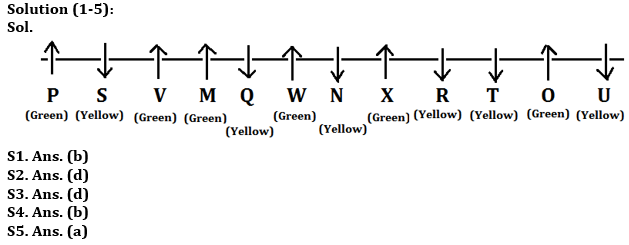
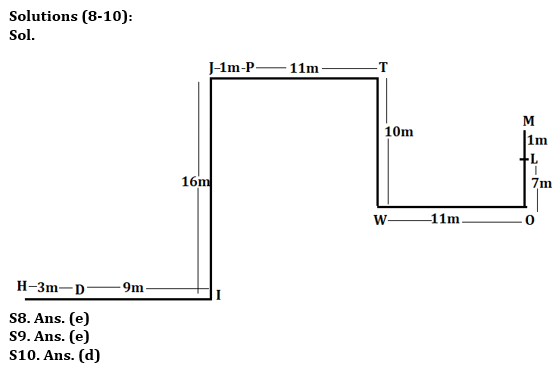
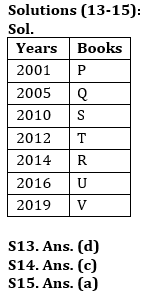



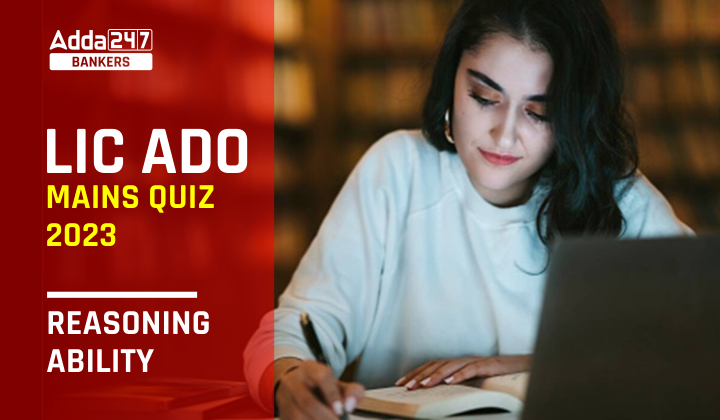

 GA Capsule for SBI Clerk Mains 2025, Dow...
GA Capsule for SBI Clerk Mains 2025, Dow...
 The Hindu Review October 2022: Download ...
The Hindu Review October 2022: Download ...
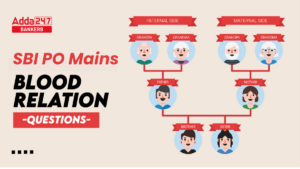 Important Blood Relation Questions for S...
Important Blood Relation Questions for S...





